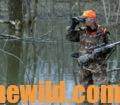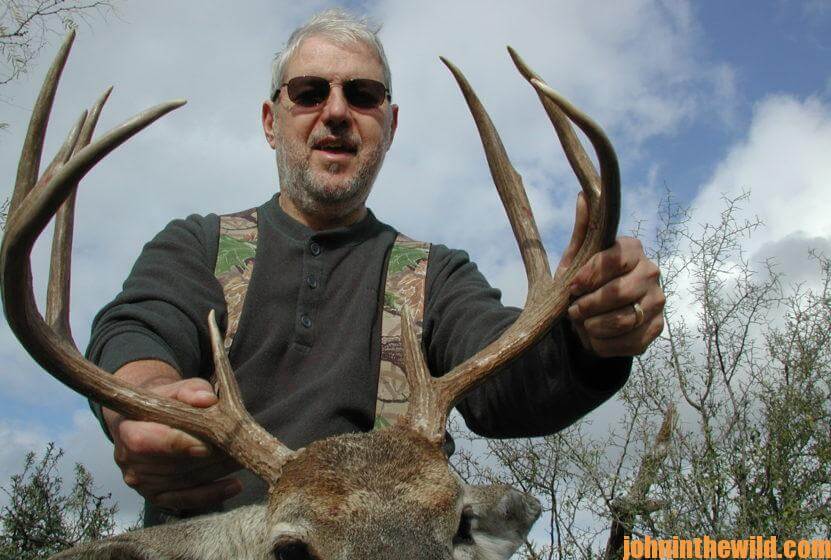Editor’s Note: Many hunters realize that if they can get in the woods before other sportsmen come to the woods that this second group of outdoorsmen will spook the deer toward the first group of hunters, which is an effective way of taking deer. However, in areas with a great deal of hunting pressure, some outdoorsmen have learned how to hunt the front sides and the back sides of this hunting pressure.
Imagine a line of hunters all coming into the woods at the same time from the same direction. This mass stream of humanity should move all the deer in a region in front of them as they enter the woods. However, also realize that if these hunters are 50–100 yards apart and come into the woods, the deer that have held tight and allowed the hunters to walk past them easily can slip out 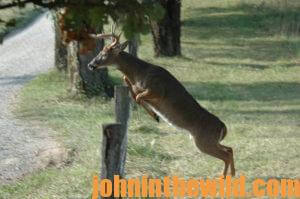 behind that wave of hunters. So, there is a primary movement of deer away from hunters as the sportsmen come into woods, and a secondary movement of deer away from hunters after the sportsmen have passed by where the deer are hiding. To effectively use hunting pressure to take deer, a wise woodsman will hunt both movement patterns that the deer naturally will establish.
behind that wave of hunters. So, there is a primary movement of deer away from hunters as the sportsmen come into woods, and a secondary movement of deer away from hunters after the sportsmen have passed by where the deer are hiding. To effectively use hunting pressure to take deer, a wise woodsman will hunt both movement patterns that the deer naturally will establish.
Some hunters say that if they’re hunting a place where they know hunters are coming into the woods, either from some road or from another type of natural access, they’ll plan to get into the woods before the other hunters and hope to bag a deer as the hunting pressure approaches. They’ll allow the other hunters coming toward them to pass by and wait for the second movement of deer, will be animals trying to escape out behind the hunters. Then the hunter will have two opportunities to see a buck – as the hunting pressure approaches, and the deer flee from the pressure, and after the pressure of the other hunters passes by, and the deer slip out.”
Often a hunter when walking through the woods and hunting deer signs will take a staff with him and try to sound like a deer walking on four legs, rather than a man walking on two. He’ll use the staff to imitate as closely as possible the sounds a deer makes as he walks. Bucks come up to investigate.
As one hunter recalled, “I had a friend of mine bag a really-nice deer that I called up using this technique. I was on one side of the hill trying to imitate a deer’s walk when this big buck came 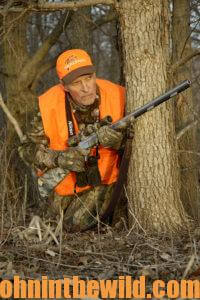 running up from the other side of the hill to investigate the sounds I was making. When I saw the deer coming, I gave a tending grunt – the sound a buck makes when he’s with a doe and encounters another buck. The sound is a grunt that resembles a squeaking door. Once I gave that sound, the buck just came right to me. Although I’m not sure that grunting alone will call a deer, I definitely believe that making sounds like a deer caused that buck on that particular day to come to within gun range.”
running up from the other side of the hill to investigate the sounds I was making. When I saw the deer coming, I gave a tending grunt – the sound a buck makes when he’s with a doe and encounters another buck. The sound is a grunt that resembles a squeaking door. Once I gave that sound, the buck just came right to me. Although I’m not sure that grunting alone will call a deer, I definitely believe that making sounds like a deer caused that buck on that particular day to come to within gun range.”
I’m convinced that one of the reason hunters don’t take more deer is that they are timid about doing something that may be considered a little weird, strange or unusual by other hunters. Indians, who are some of the best deer hunters who ever lived, thought nothing was weird or unusual about laying on their bellies on the forest floor and crawling to within bow range of a fat buck. As a matter of fact, many of the Indians even dressed in deer’s skins to give the appearance of being forest creatures. However, when we think about laying down on the cold, dirty ground and crawling through the leaves where redbugs and ticks live, we reason that only a person who has completely lost his mind will try such a tactic to bag a buck.
But my hunting friend, Dr. Robert Sheppard, a dedicated deer hunter, told me, “After all, John, when you consider the money you spend to buy top-notch hunting equipment, all the time that’s necessary to do an efficient job of scouting and the hours of staying still in a tree stand, looking and searching for a buck to harvest, then whatever antics you have to go through to bag that buck seem justified. A few years ago I spotted a large 6-pointer feeding down the edge of a field, upwind of me. I couldn’t figure out any way to circle the deer and still be able to get a shot. Through the middle of the field there was a small, 1-1/2 foot wide drainage ditch with 1-1/2 inches of water in it. The ditch offered the only access to intercept the deer’s path without being detected.
“So, I crawled into the ditch and through the water for about 100 yards, until I reached a point above the deer where the wind kept my scent away from him, yet I was in his line of travel. Since the ditch wasn’t large enough to sit up in, I rolled over on my back and looked up at the sky. Occasionally I peered down toward my toes and saw that the 6-pointer still was coming in my direction. But when the deer was about 60-yards away from me, I knew that if I looked up again, the animal surely would spot me. I lay motionless in the ditch and listened for the deer.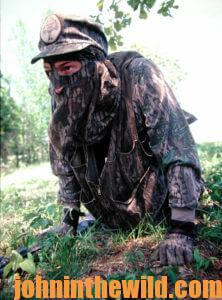
In about 15 minutes, I could hear the deer crunching acorns about 15–20 yards from where I was hiding. I rolled over on my left elbow and propped my rifle up. As the deer continued to feed with his head down, he came straight toward me. Once the crosshairs of my scope settled behind the deer’s front shoulder, I squeezed the trigger. I shot through the deer’s antlers and broke his spine, and the deer fell. I stepped-off the distance from my spot in the ditch to where the animal lay motionless, and the distance was only 10 paces. Although the deer only had 6 points, his antlers were massive, and he weighed over 200 pounds. The trophy mount is now over my fireplace, and I’m convinced that if I had to crawl 200 or 500 yards in the water on my belly to bag that buck again, I would.
“I have made the decision that any time there’s opportunity to get close enough to bag a good-sized deer by crawling toward him, I will lay on my stomach and crawl. I believe that more hunters could get closer to larger deer to take the best shots if they would get off their feet, onto their bellies and do a little low-ground crawling.”
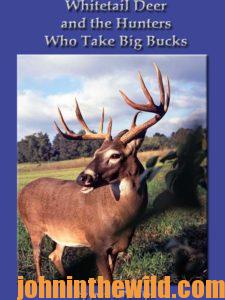 To learn more about hunting deer, check out John E. Phillips’ book, available in Kindle, print versions and Audible, “Whitetail Deer and the Hunters Who Take Big Bucks,” (http://amzn.to/2bYwYOK).
To learn more about hunting deer, check out John E. Phillips’ book, available in Kindle, print versions and Audible, “Whitetail Deer and the Hunters Who Take Big Bucks,” (http://amzn.to/2bYwYOK).

